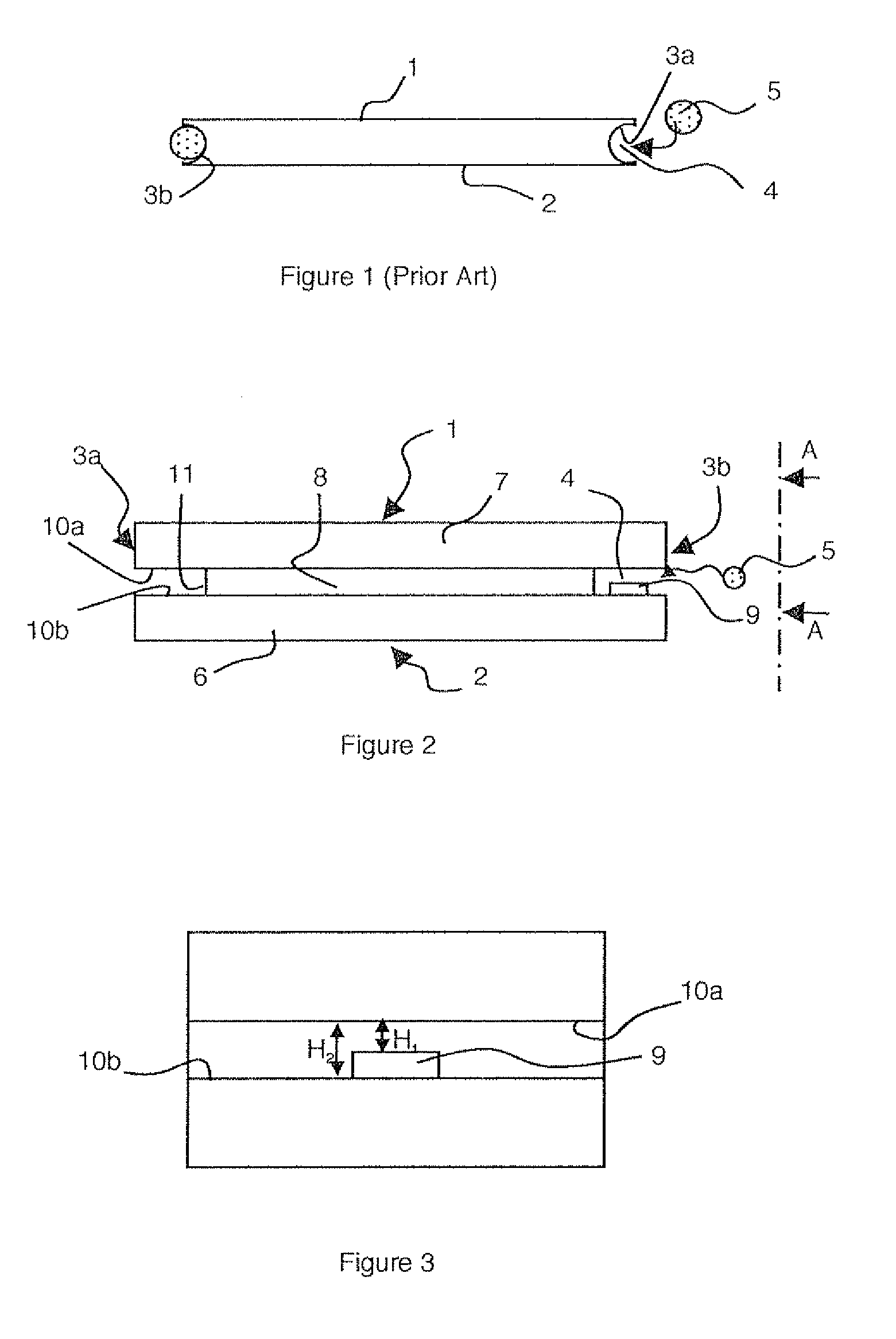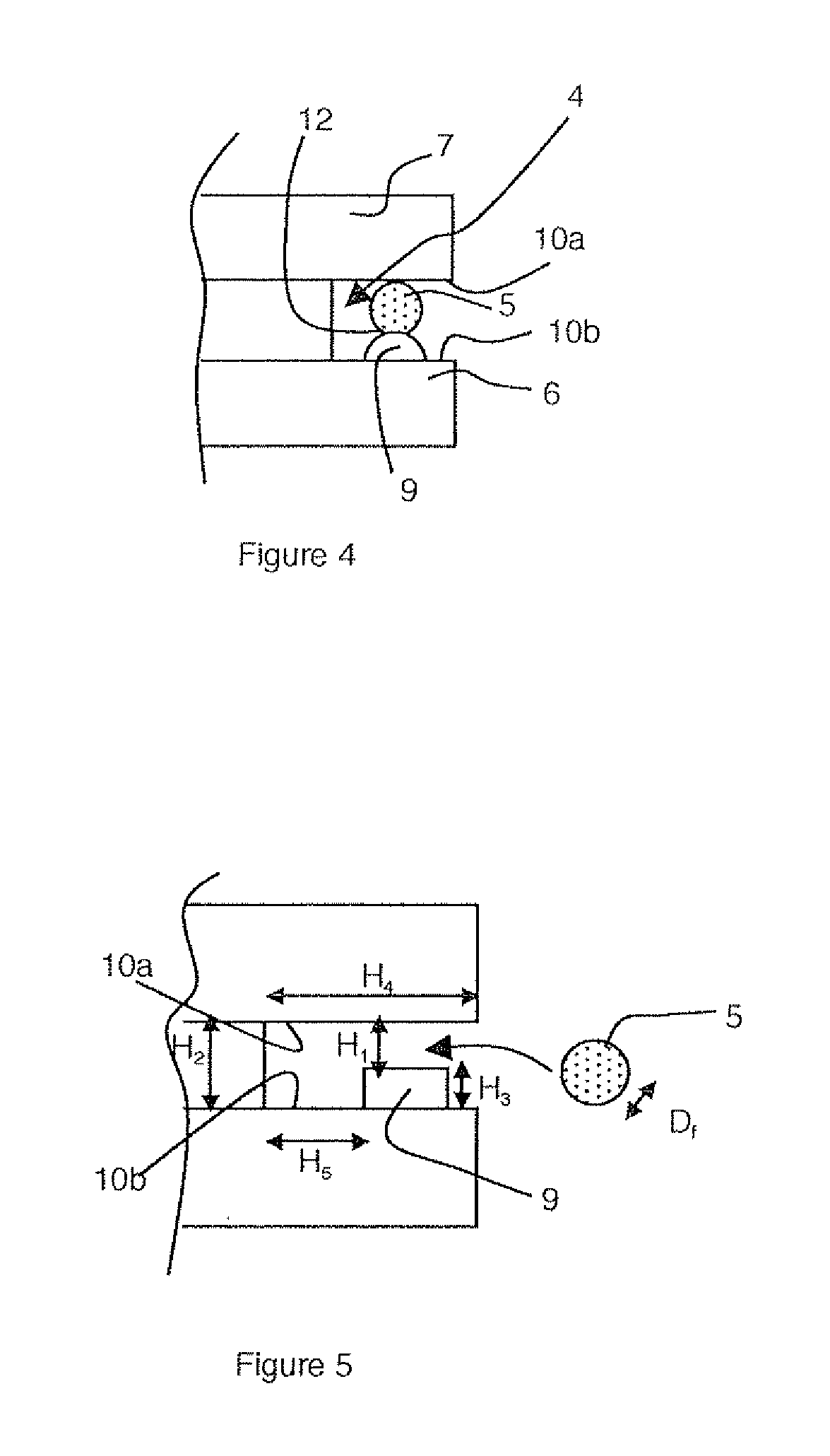Assembly of a wire element with a microelectronic chip with a groove comprising at least one bump securing the wire element
a microelectronic chip and groove technology, applied in the direction of basic electric elements, solid-state devices, electric apparatus, etc., can solve the problems of increasing the force to be applied when embedding, difficult to perform embedding without damaging the chip, and unsuitable for flexible structure integration
- Summary
- Abstract
- Description
- Claims
- Application Information
AI Technical Summary
Benefits of technology
Problems solved by technology
Method used
Image
Examples
Embodiment Construction
[0017]As illustrated in FIG. 2, a microelectronic chip according to the invention comprises two parallel main surfaces 1, 2 and lateral surfaces 3a and 3b. At least one of lateral surfaces 3a, 3b comprises a longitudinal groove 4. Groove 4 is delineated by two side walls 10a and 10b and a bottom 11. The groove is designed to accommodate a wire element having a longitudinal axis that is parallel to the longitudinal axis of the groove.
[0018]This type of chip can be in the form of an assembly of two microelectronic components or of a microelectronic component 6 and a counter-plate 7, of substantially the same dimensions and joined to one another by a spacer 8. The spacer being of smaller dimensions than those of the component, placement thereof enables at least one groove 4 to be obtained naturally. As illustrated in FIG. 2, the chip can comprise two grooves 4 arranged on each side of spacer 8. Grooves 4 are thus obtained by assembly of the chip, avoiding a complex machining step that ...
PUM
| Property | Measurement | Unit |
|---|---|---|
| height H3 | aaaaa | aaaaa |
| height H3 | aaaaa | aaaaa |
| height H3 | aaaaa | aaaaa |
Abstract
Description
Claims
Application Information
 Login to View More
Login to View More - R&D
- Intellectual Property
- Life Sciences
- Materials
- Tech Scout
- Unparalleled Data Quality
- Higher Quality Content
- 60% Fewer Hallucinations
Browse by: Latest US Patents, China's latest patents, Technical Efficacy Thesaurus, Application Domain, Technology Topic, Popular Technical Reports.
© 2025 PatSnap. All rights reserved.Legal|Privacy policy|Modern Slavery Act Transparency Statement|Sitemap|About US| Contact US: help@patsnap.com



